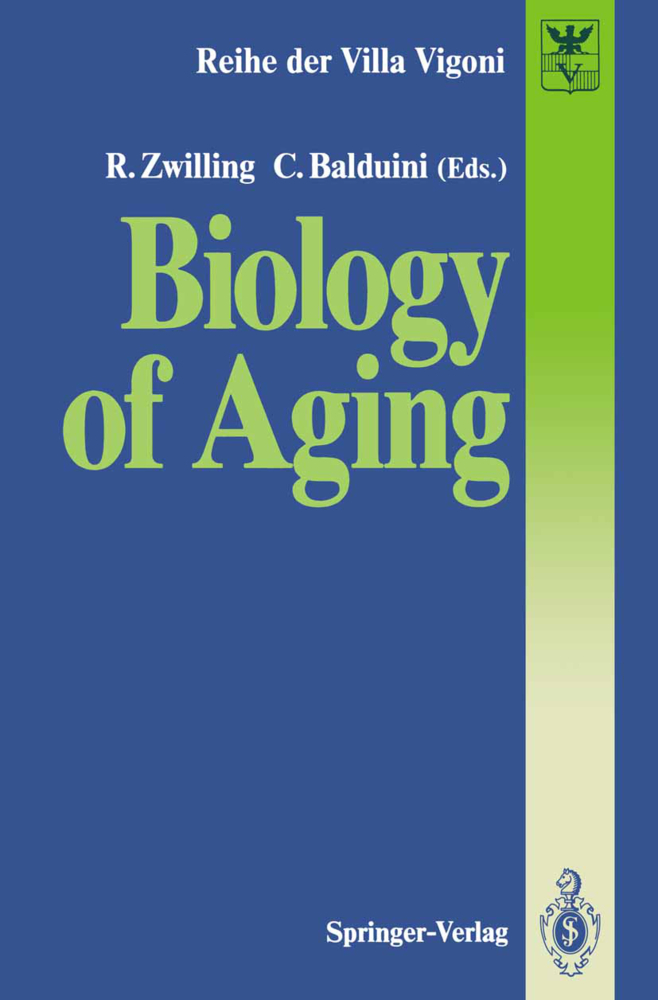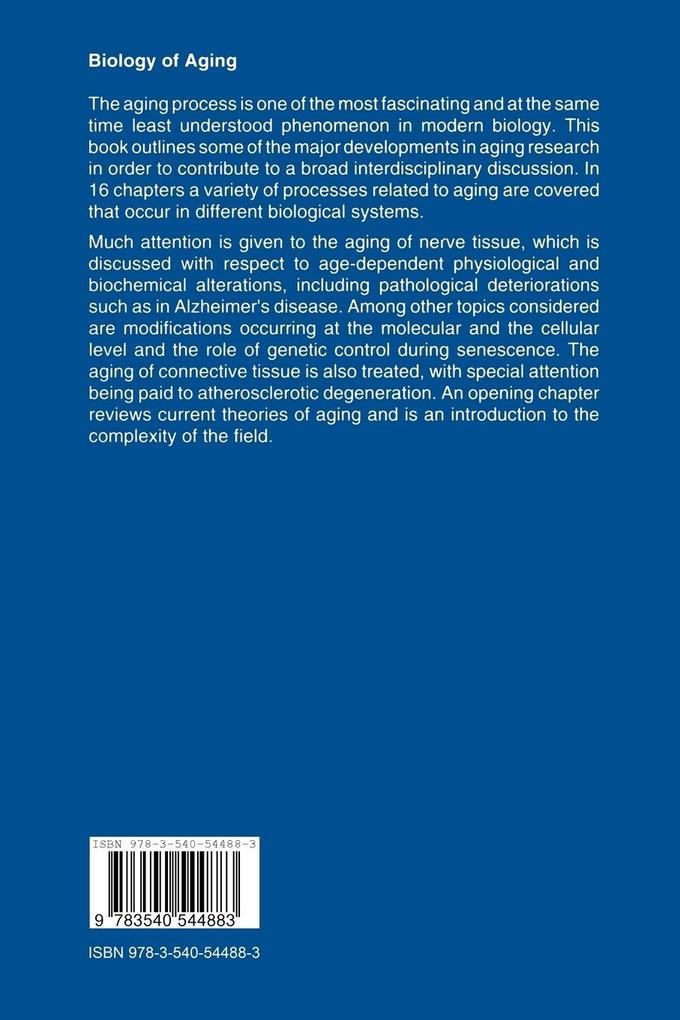
Zustellung: Sa, 03.05. - Mi, 07.05.
Versand in 3 Tagen
VersandkostenfreiBestellen & in Filiale abholen:
bhe aim of the book was not to focus the age-dependentmodifications of one specific biological systems orphenomena, but the attempt was pursued to cover severalfields in which the biological research on aging is goingon. The fundamental purpose of this planning was to offerthe PhD students an advanced text that could raise thepossibility of an interdisciplinary discussion on a wideand complex field that is very suitable to be utilized asan example of the connection existing between advancedteaching and experimental research.
Inhaltsverzeichnis
Aging Still a Mystery. - Enzymatic and DNA/Protein Interaction Studies Indicate That Uracil in Neuronal DNA Could Contribute to Nerve Cell Aging. - Age-Associated Changes of Muscarinic Cholinergic and N-Methyl-D-Aspartate Receptors in the Mouse Brain: Partial Reconstitution by Phosphatidylserine Treatment. - Membrane Processes in Human Red Cell Aging. - Aging and Electron Leakage Outside Mitochondrial Energy-Transducing Sequence. - Oxidative, Energy and Related Brain Metabolism During Normal Aging. - Different Susceptibilities of Protein Thiol Groups to Oxidative Modifications: Implications in Aging Research. - Unravelling the Molecular Defect in Alzheimer s Disease. - Expression of Alzheimer s Amyloid Gene in Development, Aging, and Alzheimer s Disease. - Aging Brain and Hypothalamic-Pituitary-Adrenal Function: Implications for Dementia of the Alzheimer Type. - Involvement of Proteoglycan Metabolism Regulation in Aging and Atherosclerosis. - Arteriosclerosis and Aging. Distribution Pattern of Atherosclerosis in Various Arteries. - Physiological and Surgical Aspects of the Geriatric Patient. - Poly(ADP-ribosyl)ation, Genetic Instability, and Aging. - Hormone Production in Neuroendocrine Tumours of Transgenic Mice. - Genetic Control of Aging in the Ascomycete Podospora anserina.
Produktdetails
Erscheinungsdatum
23. April 1992
Sprache
englisch
Auflage
Softcover reprint of the original 1st ed. 1992
Seitenanzahl
184
Reihe
Reihe der Villa Vigoni
Herausgegeben von
Cesare Balduini, Robert Zwilling
Verlag/Hersteller
Produktart
kartoniert
Abbildungen
XII, 171 p.
Gewicht
289 g
Größe (L/B/H)
235/155/11 mm
Sonstiges
Paperback
ISBN
9783540544883
Entdecken Sie mehr
Bewertungen
0 Bewertungen
Es wurden noch keine Bewertungen abgegeben. Schreiben Sie die erste Bewertung zu "Biology of Aging" und helfen Sie damit anderen bei der Kaufentscheidung.










